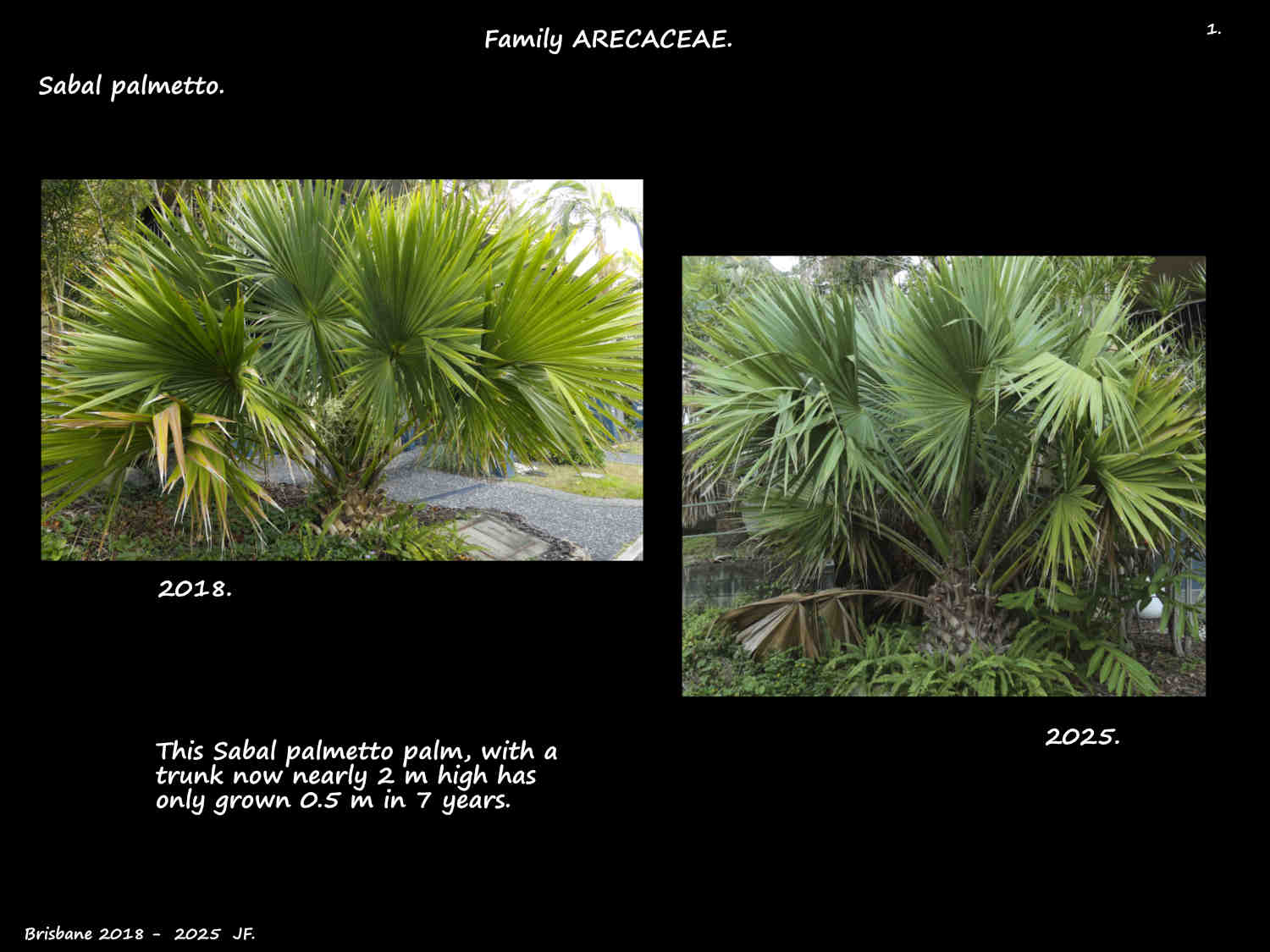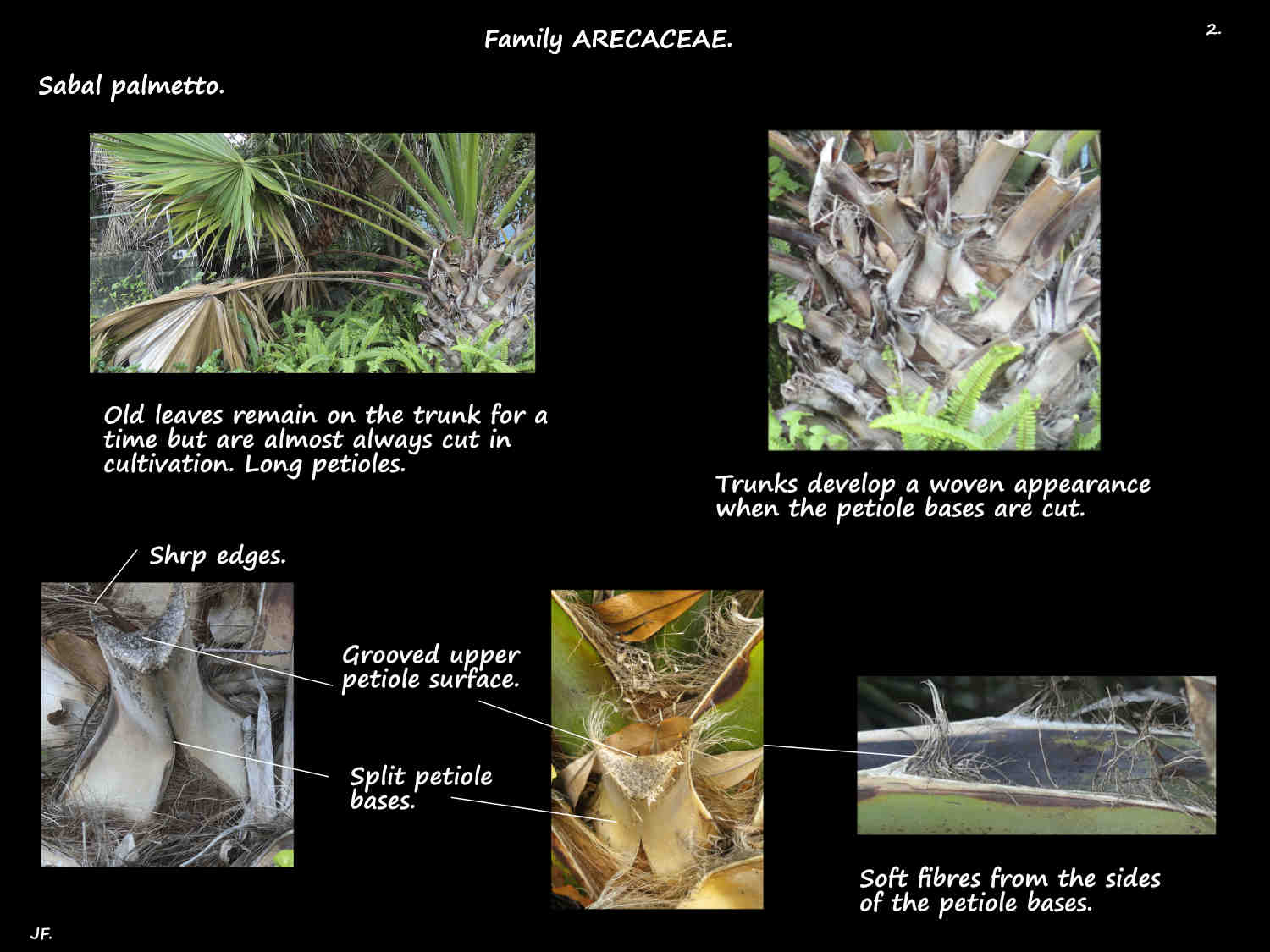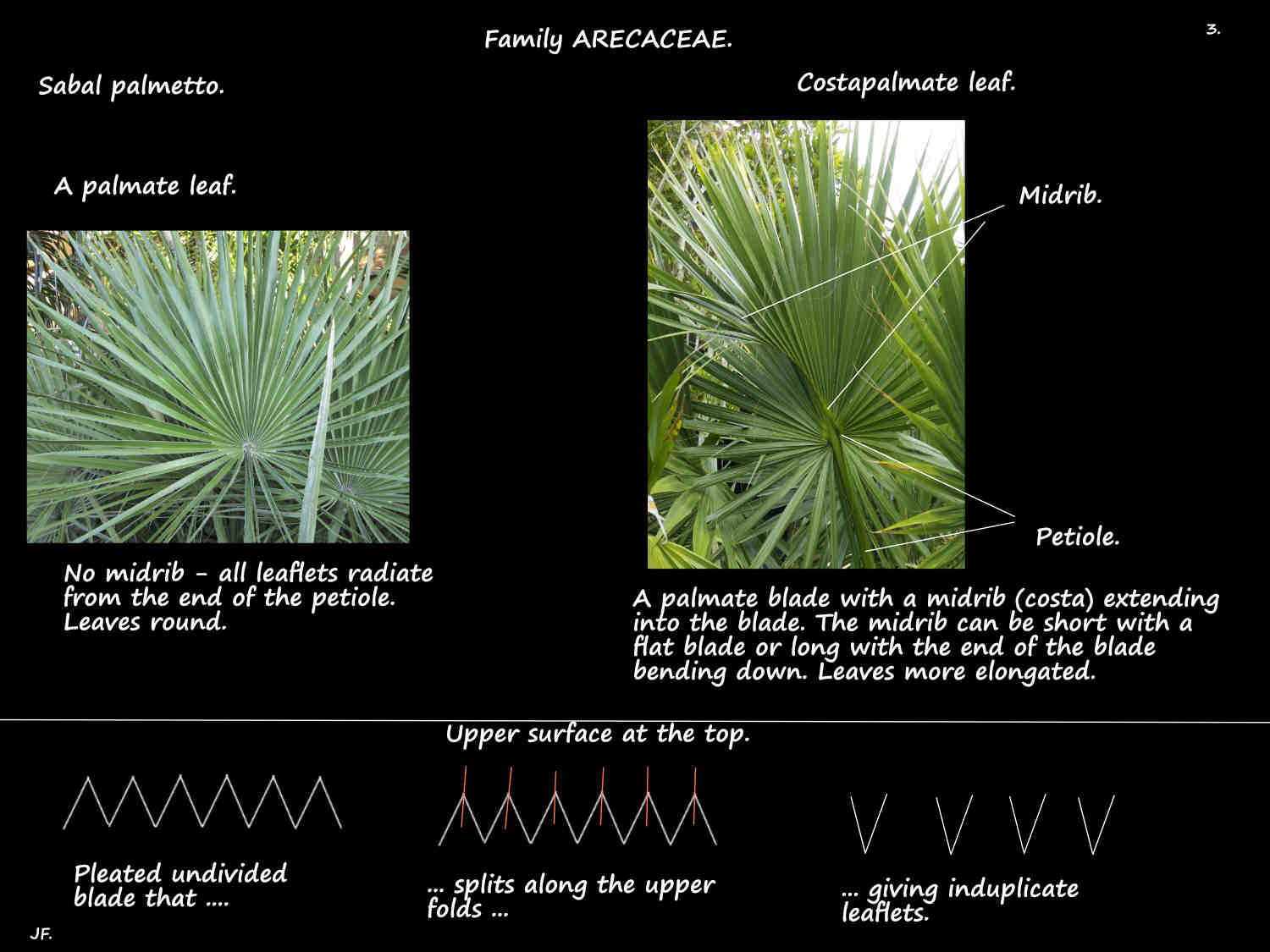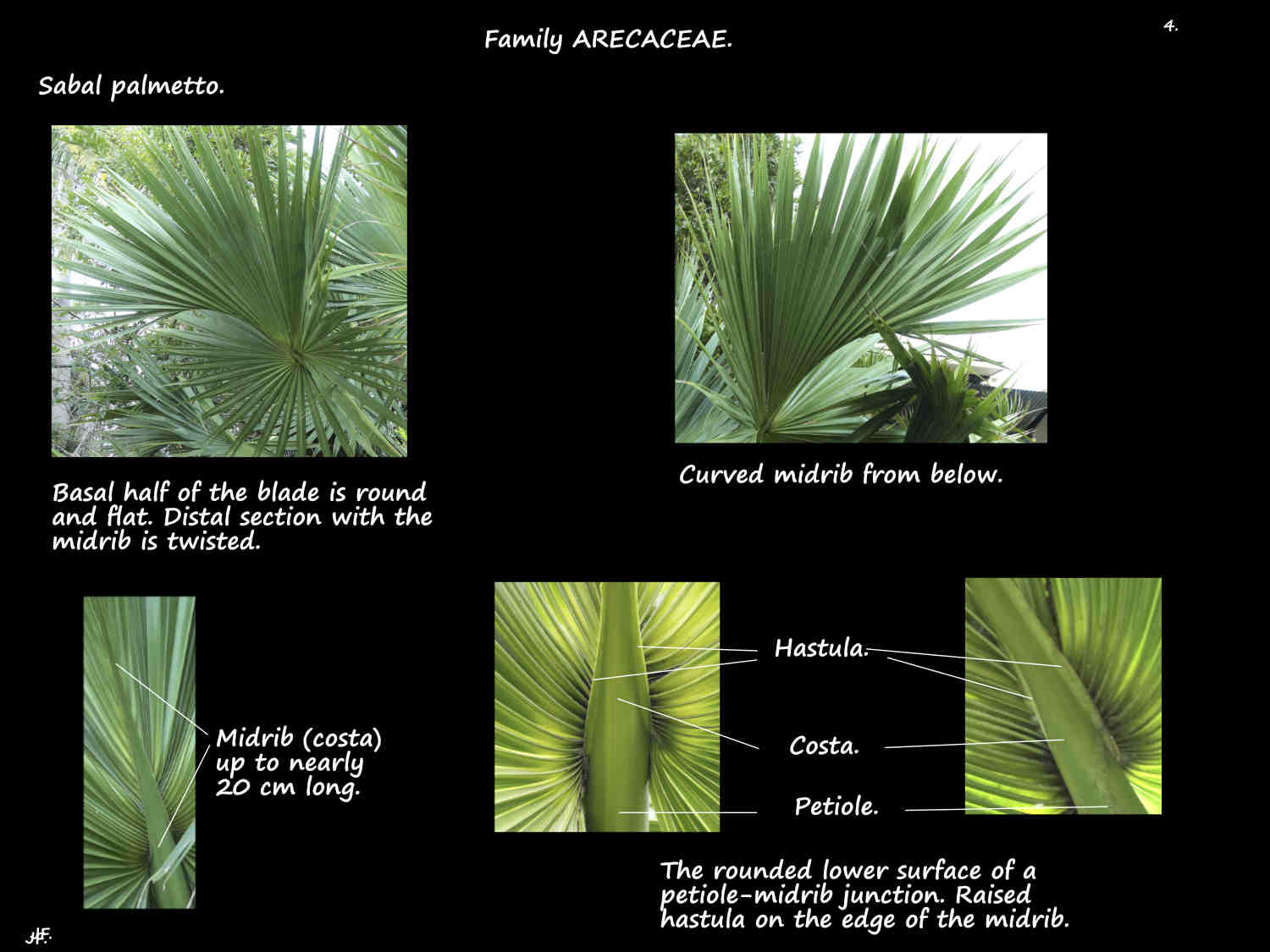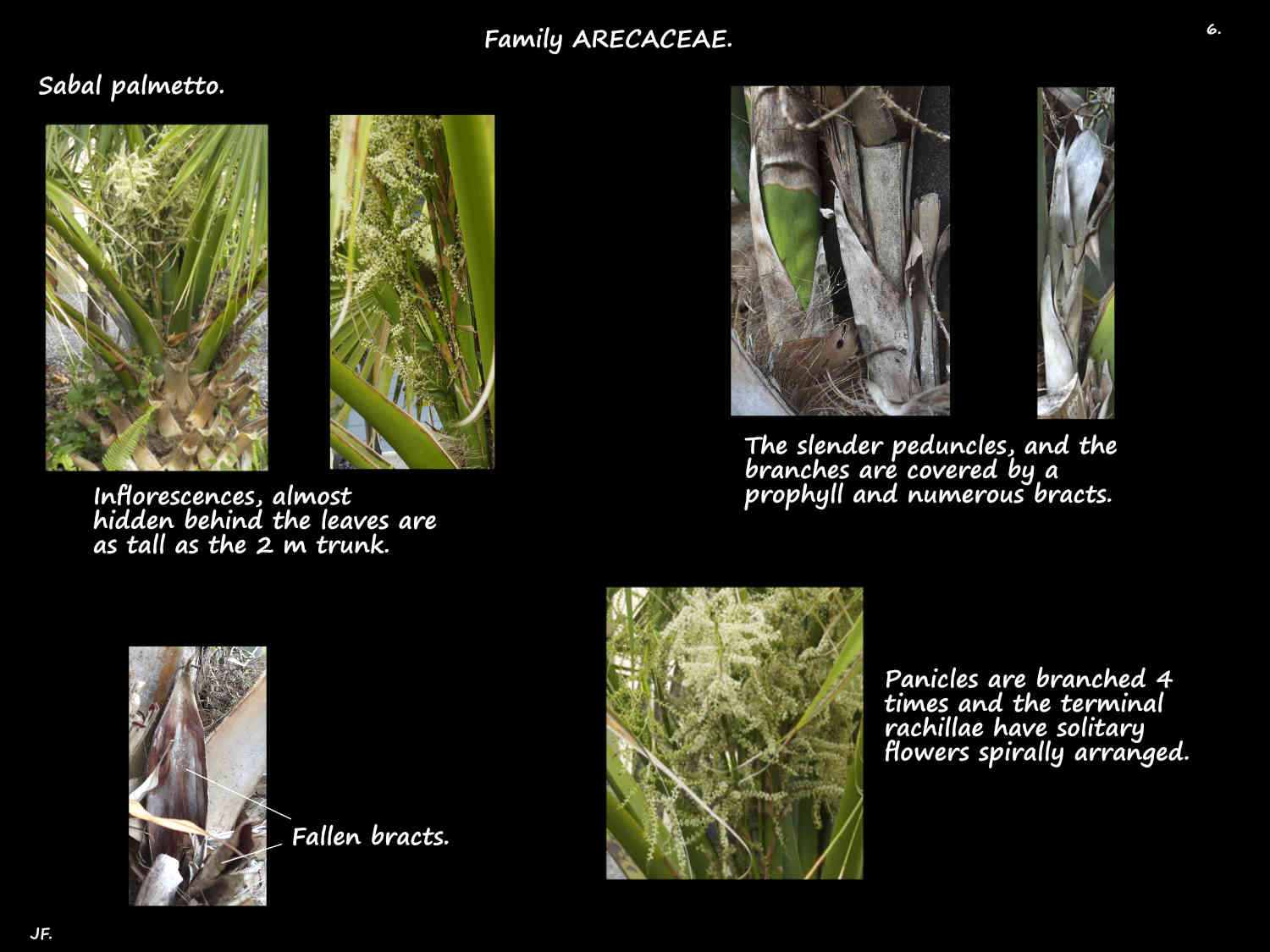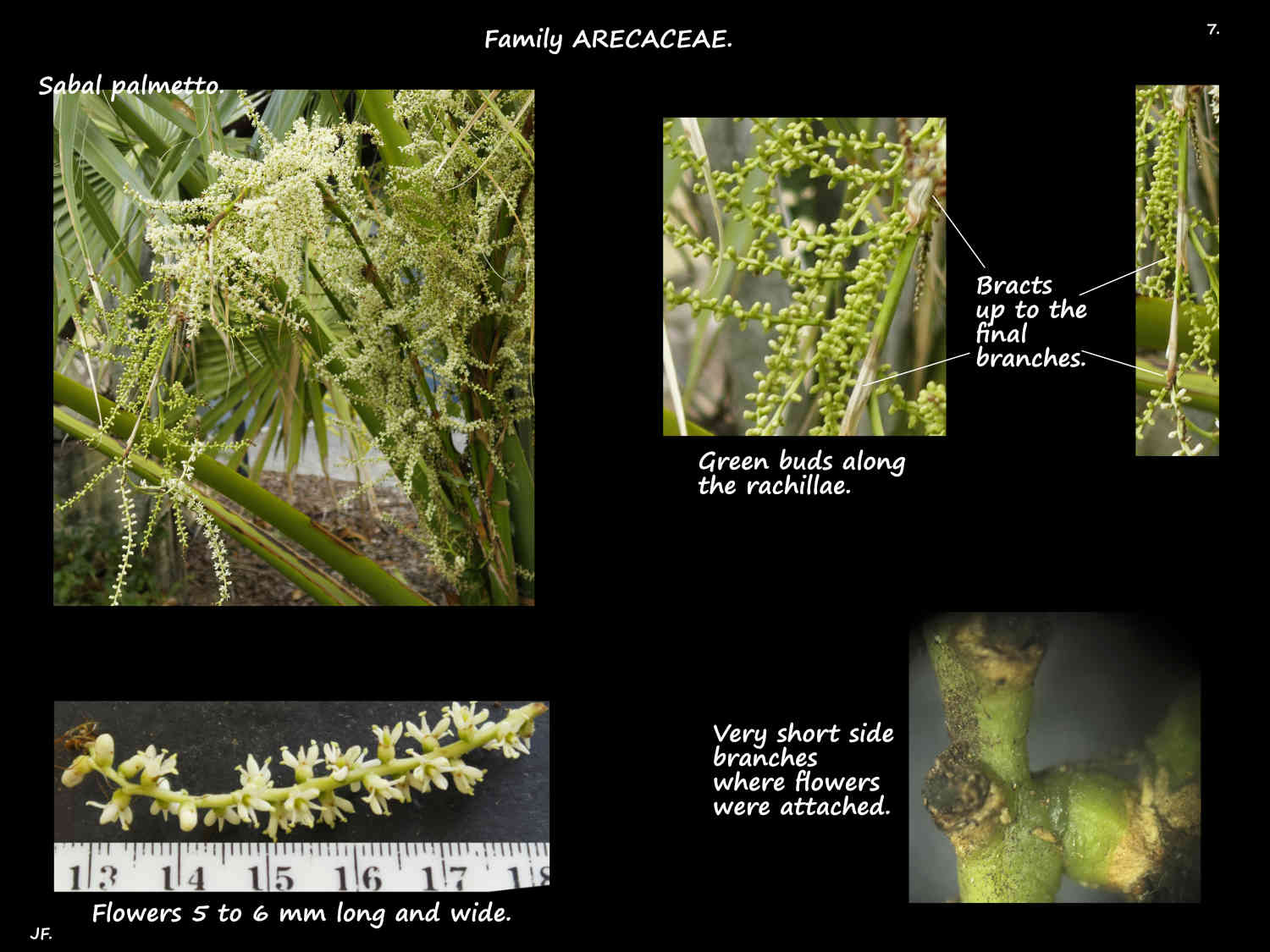The widely cultivated Cabbage or Sabal palm has variable features.
They have a single stem (trunk) usually only a few metres high in cultivation.
Dead leaves remain on the trunk for some time but in cultivation are usually cut off.
The split petiole bases remaining give a woven appearance to the trunk.
Older and taller trunks have less or no petiole bases so are smoother.
The up to 30 large costapalmate leaves have blades up to around 2 m long.
The petiole, up to around 1.5 m long and grooved on the upper surface has no spines.
Leaves are similar to regular palmate blades but have a midrib or costa.
The usually long midrib curves sideways and down.
The hastula, short or up to nearly 20 cm long has a pointed end.
Along the midrib are leaflets or segments 1 m or more long and 4 cm wide.
Leaflets may be free, joined in 2’s or 3’s or in larger segments.
The tips may be split and a few fibres along the edges often peel off.
Inflorescences, between the leaves are a panicle that is branched 4 times.
Up to 2.5 m high they are usually partly hidden by the leaves.
There is a prophyll and peduncular bracts on most branches.
The terminal branches or rachillae have solitary spirally arranged flowers.
Around 5 to 6 mm long they have 3 sepals and 3 petals.
The white to cream oblong petals have their bases fused.
The 6 stamens are in 2 whorls and the ovary has 1 (2 or 3) ovules.
The green then black fruit typically have 1 seed but may have 2 or 3.
The roughly spherical fruit are 1 to 1.4 cm across and the seeds 0.5 to 1 cm.
They are palms with a solitary above ground trunk, more han 10 leaves, inflorescences branched 4 times and fruit up to 14 mm across.
There is a cultivar with mostly undivided blades.
J.F.

